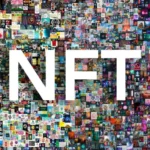The NFT (Non-Fungible Token) market has grown exponentially over the last few years, offering unique investment opportunities.
However, with thousands of NFT projects available, choosing the right one to invest in can be overwhelming.
This guide provides essential factors to consider when evaluating NFT projects, helping you make informed investment decisions.
A well-researched investment strategy can differentiate between a profitable and a poor investment in this highly volatile market.
Understanding NFTs and Their Value
NFTs are digital assets stored on a blockchain that represent ownership of unique items such as art, collectibles, virtual land, and gaming items.
The value of an NFT is determined by factors like rarity, utility, demand, and community engagement. Unlike cryptocurrencies, NFTs are indivisible and cannot be exchanged on a one-to-one basis.
Types of NFTs
- Art NFTs – Digital artworks verified on the blockchain, often sold in auction formats.
- Collectible NFTs – Limited-edition digital items like trading cards that gain value over time.
- Gaming NFTs – In-game assets such as weapons, skins, and characters with real-world value.
- Virtual Land NFTs – Digital real estate in metaverse projects, which can be rented or sold.
- Music & Video NFTs – Exclusive ownership of digital media, sometimes granting royalties.
- Utility NFTs – Tokens offering access to special services, memberships, or real-world benefits.
- Sports NFTs – Digital collectibles related to sports teams, athletes, and special events.
ALSO READ: How to Use DeFi Lending Platforms to Borrow or Earn Interest?
Key Factors to Evaluate NFT Projects

Team and Founders
A reputable and transparent team increases trust in an NFT project. Research the backgrounds of founders, developers, and artists.
Projects led by experienced individuals with a history in blockchain, gaming, or digital art have a higher chance of success. Look for:
- Previous successful projects or contributions to the blockchain space.
- Transparency in their identities and past professional experience.
- Strong engagement with the community and investors.
Roadmap and Whitepaper
A well-defined roadmap and whitepaper outline the project’s vision, development plans, and future utility. Look for:
- Long-term plans and goals that extend beyond the initial minting phase.
- Utility beyond mere digital ownership, such as staking mechanisms or revenue-sharing models.
- Partnerships with established brands or influencers that indicate credibility.
Community and Social Presence
A strong and engaged community is crucial for an NFT project’s success. Join Discord, Twitter, and Telegram discussions to gauge community activity. Look for:
- Active and supportive community members discussing the project.
- Transparency from developers in addressing concerns and updates.
- Engagement on social media platforms, collaborations, and marketing campaigns.
Rarity and Scarcity
The rarity of an NFT influences its value. Check rarity rankings on platforms like Rarity.tools and HowRare.is.
A lower supply often leads to higher demand and price appreciation. Limited-edition collections, especially those with verifiable scarcity, are often more valuable.
Utility and Use Case
- NFTs with real-world utility offer better long-term value. Consider:
- Access to exclusive content, physical merchandise, or VIP events.
- Integration with games, metaverses, or DeFi ecosystems.
- Passive income opportunities, such as staking, royalties, or yield farming.
- Governance rights, where NFT holders can vote on project decisions.
Blockchain and Smart Contracts
The blockchain an NFT is built on affects security, fees, and interoperability. Ethereum, Solana, Binance Smart Chain, and Polygon are popular choices. Ensure smart contracts are:
- Secure and audited by reputable firms to prevent exploits.
- Compatible with secondary markets for easy trading.
- Offering low transaction fees to reduce investment costs.
Market Trends and Historical Performance
Analyze past performance and trading volumes on NFT marketplaces like OpenSea, Rarible, and LooksRare. Projects with steady growth and demand are safer investments. Consider:
- The average sale price over time.
- The number of active traders and holders.
- Secondary market liquidity and resale potential.
Partnerships and Collaborations
Collaborations with celebrities, brands, and gaming platforms add credibility to NFT projects.
Research project endorsements and business relationships. Established brands entering the NFT space often signal stability and long-term growth.
Smart Contract Royalties and Revenue Sharing
Some NFT projects allow owners to earn passive income through royalties. Look for projects that:
- Provide a share of resale royalties to initial buyers.
- Offer staking rewards for holding NFTs.
- Enable participation in decentralized autonomous organizations (DAOs) that share revenue.
Risks Associated with NFT Investments

NFT investments come with risks, including:
- Market Volatility: NFT prices fluctuate significantly due to supply and demand.
- Scams and Rug Pulls: Some projects abandon their roadmaps after initial funding.
- Lack of Liquidity: Some NFTs take time to sell, making exits challenging.
- Regulatory Uncertainty: Governments may impose restrictions on NFT trading, affecting liquidity and resale value.
- Hype vs. Substance: Many NFT projects rely on marketing hype without delivering long-term value.
ALSO READ: How to Diversify Your Crypto Investment Portfolio?
How to Conduct Research Before Investing?
Research Checklist
| Factor | Questions to Ask |
|---|---|
| Team & Founders | Are they reputable with a proven track record? |
| Roadmap | Does the project have clear goals and milestones? |
| Community | Is the community active and engaged? |
| Rarity | How rare is the NFT compared to others in the collection? |
| Utility | Does the NFT provide real-world benefits? |
| Blockchain | Is the blockchain scalable and cost-effective? |
| Market Trends | What is the trading volume and past performance? |
| Partnerships | Are there collaborations with known brands or influencers? |
| Revenue Sharing | Does the project offer staking or royalties? |
Where to Buy NFTs
Popular NFT Marketplaces
- OpenSea – Largest NFT marketplace for various assets.
- Rarible – Community-driven marketplace with multiple blockchain support.
- SuperRare – Focused on high-end digital art.
- Foundation – Exclusive NFT art platform for curated collections.
- LooksRare – Decentralized marketplace rewarding traders with tokens.
- Magic Eden – Leading Solana-based NFT marketplace with a growing ecosystem.
Future Trends in the NFT Market

- AI-Generated NFTs – Integration of AI art and generative collections.
- Metaverse Expansion – More utility-driven virtual land and assets.
- NFTs in Finance – Use cases in DeFi, lending, and fractional ownership.
- Regulatory Frameworks – Clearer rules for NFT taxation and ownership rights.
ALSO READ: How to Buy Bitcoin and Other Cryptocurrencies Step-by-Step?
Conclusion
Choosing the right NFT project requires thorough research and due diligence. Evaluate the team, community, rarity, and utility before making investment decisions.
While NFTs offer exciting opportunities, they also carry risks. Diversify your investments, stay updated with market trends, and focus on projects with long-term utility to maximize your success in the NFT space.







